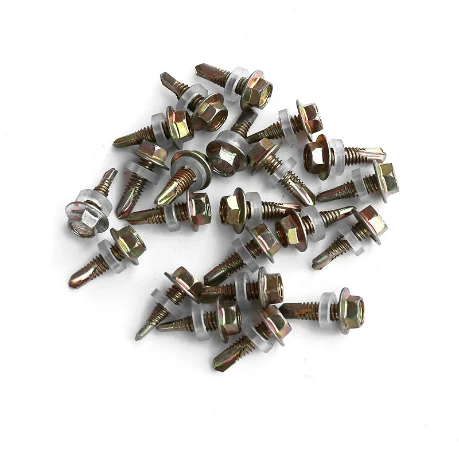

M12 Hex Nuts for Secure Fastening in Various Applications and Materials
Dec . 16, 2024 22:19 Back to list
M12 Hex Nuts for Secure Fastening in Various Applications and Materials
Understanding M12 Hex Nuts A Comprehensive Overview
When it comes to mechanical engineering and construction, the importance of small yet critical components cannot be overstated. Among these components, the M12 hex nut stands out as a vital part of many fastening applications. This article delves into the specifics of M12 hex nuts, including their specifications, applications, and the factors to consider when selecting and using them.
What is an M12 Hex Nut?
An M12 hex nut is a type of fastener with a hexagonal shape that is designed to fit onto a bolt or screw with a metric M12 thread size. The M in M12 denotes that it is a metric size, with 12 referring to the nominal diameter of the bolt in millimeters. Hex nuts are characterized by their six flat sides, which allow for easy gripping and turning with a wrench, making them ideal for securing components together.
Specifications and Standards
M12 hex nuts are manufactured according to various standards, including ISO 4032, DIN 934, and ASTM A194. The dimensions of an M12 hex nut typically include a width across flats (WAF) of 18mm, a height of approximately 6.8mm, and a thread pitch of 1.75mm. They are available in various materials, including steel, stainless steel, brass, and nylon, each providing different levels of strength, corrosion resistance, and thermal properties.
The strength of an M12 hex nut is classified based on the material from which it is made, with common grades such as 8, 10, and 12, denoting their tensile strength and yield strength properties. For instance, a grade 8 nut is often made from carbon steel and designed for high-stress applications.
Applications of M12 Hex Nuts
M12 hex nuts are used in a wide range of applications across various industries. Construction, automotive, machinery, and electronics are just a few areas where these nuts play a crucial role. They are often used to fasten metal components, secure machinery parts, and provide structural support in buildings and bridges.
m12 hex nut

In automotive applications, M12 hex nuts are commonly used for securing wheel bolts and various engine components, ensuring that essential parts are tightly held together to withstand vibrations and stress during operation. In construction, they are integral to structural steel applications, where they help join beams and columns securely.
Selecting the Right M12 Hex Nut
When selecting an M12 hex nut, several factors need to be considered to ensure optimal performance
1. Material Depending on the environment of use, select a nut made from the appropriate material. For outdoor applications susceptible to moisture and corrosion, stainless steel or coated options are preferred.
2. Grade Choose the appropriate grade based on the load-bearing requirements of your application. Higher-grade nuts provide better tensile strength and are better suited for heavy loads.
3. Surface Finish The finish can impact corrosion resistance and friction. For high moisture environments, consider using nuts with protective coatings.
4. Compatibility Ensure that the hex nut matches the specifications of the corresponding bolt or screw to prevent stripping and ensure a secure fit.
Conclusion
M12 hex nuts, while small in size, are mighty in their functionality and importance in various applications. Their versatility, combined with a wide range of available materials and standards, makes them a go-to choice for engineers and builders alike. By understanding their specifications, applications, and selection criteria, professionals can ensure that they are making informed decisions that enhance the integrity and reliability of their projects. Whether you're constructing a building, assembling machinery, or working on automotive components, the M12 hex nut is an essential fastener that plays a pivotal role in modern engineering.
Latest news
-
Hot Dip Galvanized Bolts-About LongZe|High Strength, Corrosion Resistance
NewsJul.30,2025
-
High-Strength Hot Dip Galvanized Bolts - Hebei Longze | Corrosion Resistance, Customization
NewsJul.30,2025
-
Hot Dip Galvanized Bolts-Hebei Longze|Corrosion Resistance&High Strength
NewsJul.30,2025
-
High-Strength Hot-Dip Galvanized Bolts-Hebei Longze|Corrosion Resistance&High Strength
NewsJul.30,2025
-
Hot Dip Galvanized Bolts-Hebei Longze|Corrosion Resistance&High Strength
NewsJul.30,2025
-
Hot Dip Galvanized Bolts - Hebei Longze | Corrosion Resistance, High Strength
NewsJul.30,2025

